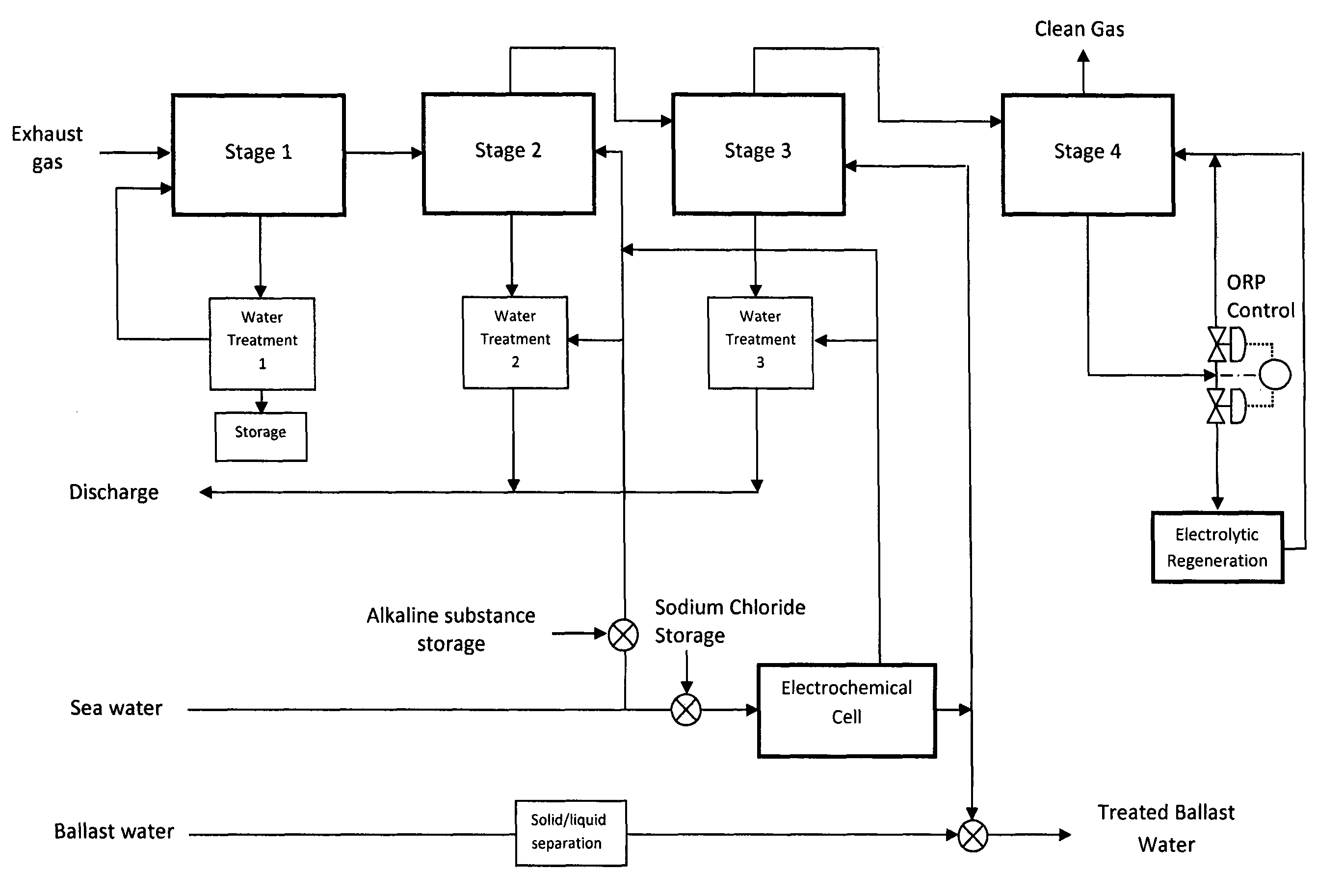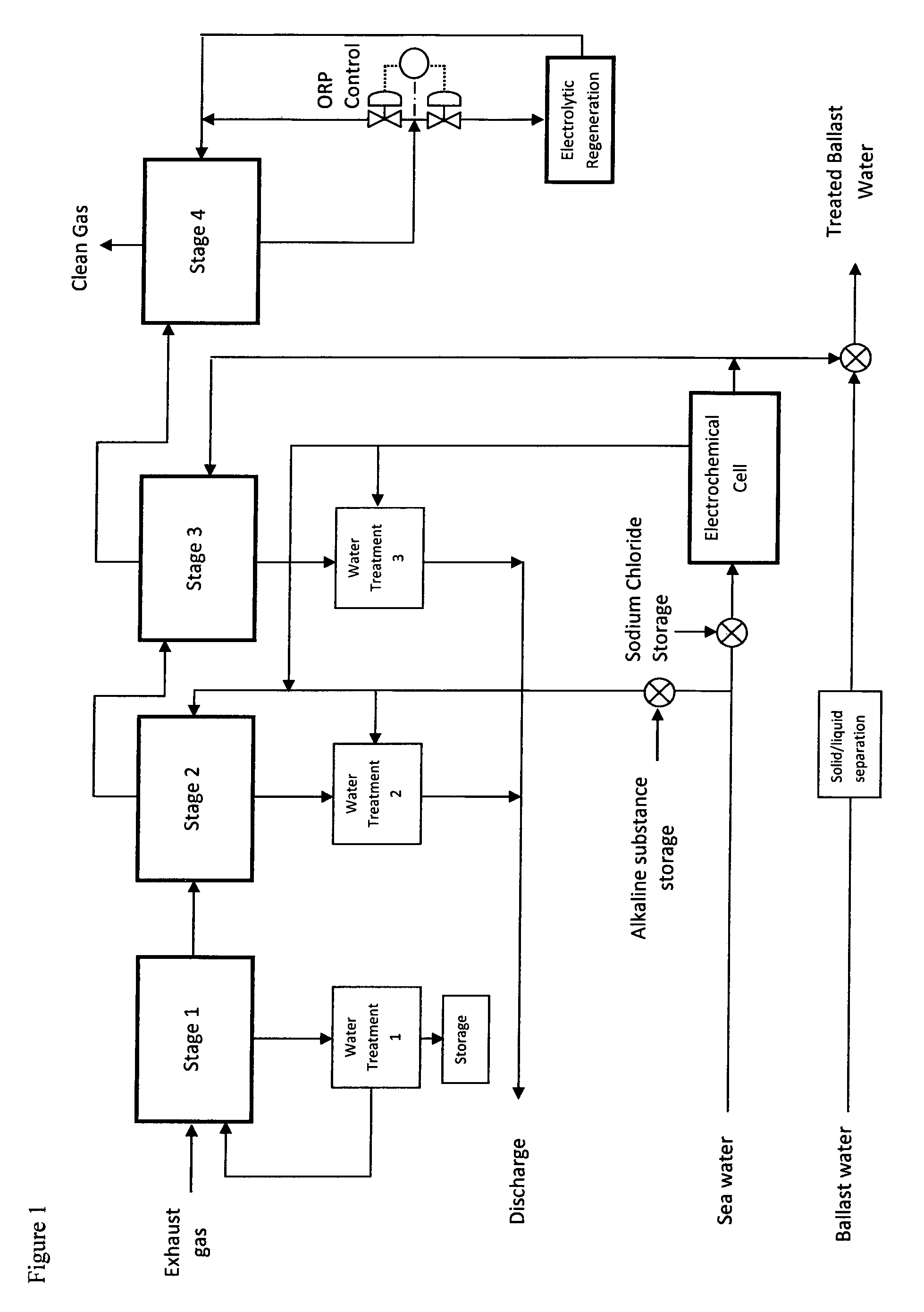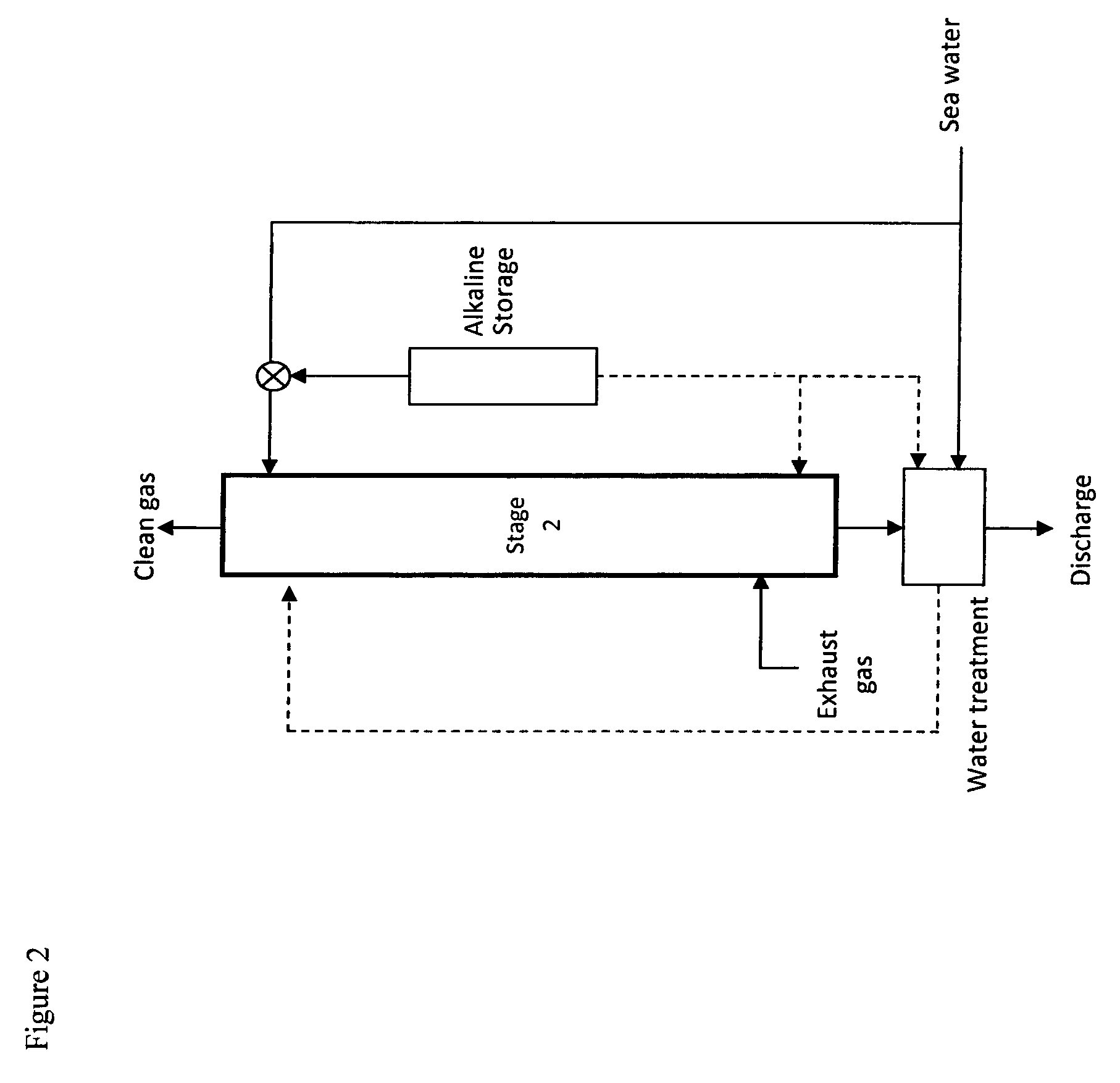Systems and methods for exhaust gas cleaning and/or ballast water treatment
a technology of exhaust gas and ballast water, which is applied in the direction of water treatment parameter control, separation process, water treatment water, etc., can solve the problems of high risk of main engine stalling, difficult practical implementation, and significant pollution of ocean-going vessels, and achieve reliable, environmentally sound and effective solutions.
- Summary
- Abstract
- Description
- Claims
- Application Information
AI Technical Summary
Benefits of technology
Problems solved by technology
Method used
Image
Examples
Embodiment Construction
[0032]According to one embodiment of the invention, a system includes exhaust gas treatment and / or ballast water treatment. The wet scrubbing technique is used in exhaust gas treatment. In exhaust gas treatment, there are four stages: (1) PM removal; (2) SOx removal; (3) NO conversion; and (4) NO2 removal. The schematic diagram according to one embodiment of the invention is illustrated in FIG. 1.
[0033]Particulate matter (PM) is removed in Stage 1, which relies on a closed-loop system for physical separation of particles from gas. The exhaust gas containing SOx, NOx, CO2 and PM flows into the particulate removal device and the PM is trapped in the medium used in the system. The medium used is in a liquid phase and it includes but not limited to freshwater and seawater. After the PM removal from the exhaust gas, the used medium. i.e. wastewater or liquid containing PM, obtained from the particulate removal device is then passed to the filtration unit for wastewater treatment. The PM ...
PUM
| Property | Measurement | Unit |
|---|---|---|
| power output | aaaaa | aaaaa |
| adsorption capacity | aaaaa | aaaaa |
| pH | aaaaa | aaaaa |
Abstract
Description
Claims
Application Information
 Login to View More
Login to View More - R&D
- Intellectual Property
- Life Sciences
- Materials
- Tech Scout
- Unparalleled Data Quality
- Higher Quality Content
- 60% Fewer Hallucinations
Browse by: Latest US Patents, China's latest patents, Technical Efficacy Thesaurus, Application Domain, Technology Topic, Popular Technical Reports.
© 2025 PatSnap. All rights reserved.Legal|Privacy policy|Modern Slavery Act Transparency Statement|Sitemap|About US| Contact US: help@patsnap.com



